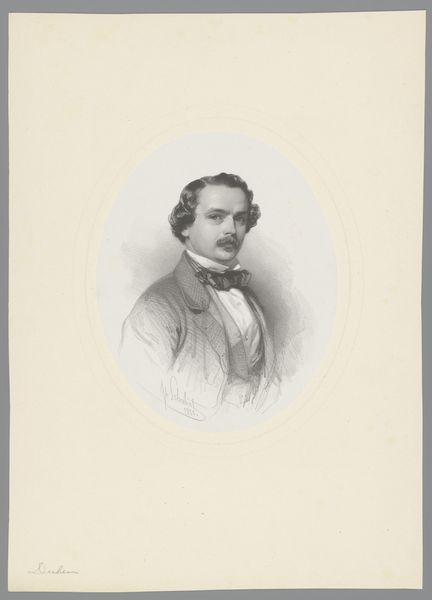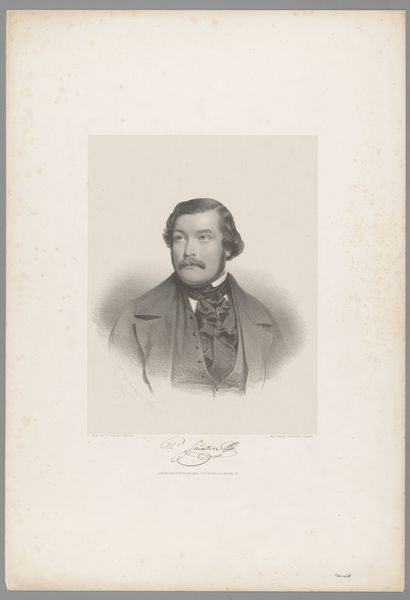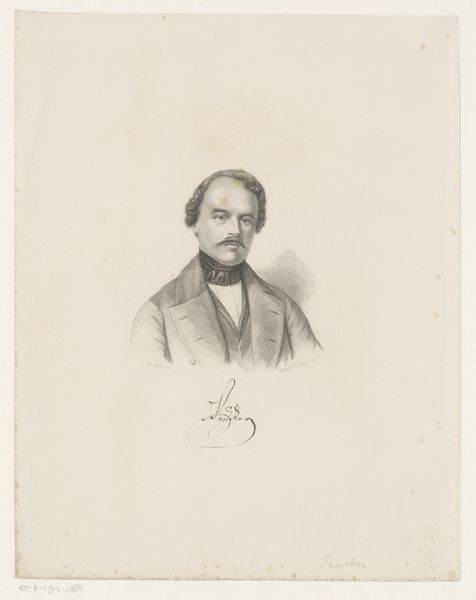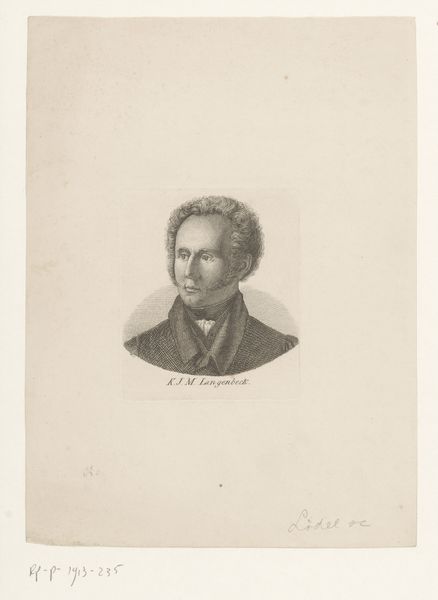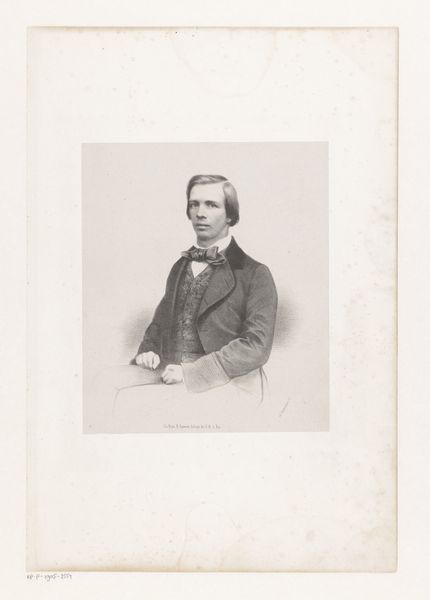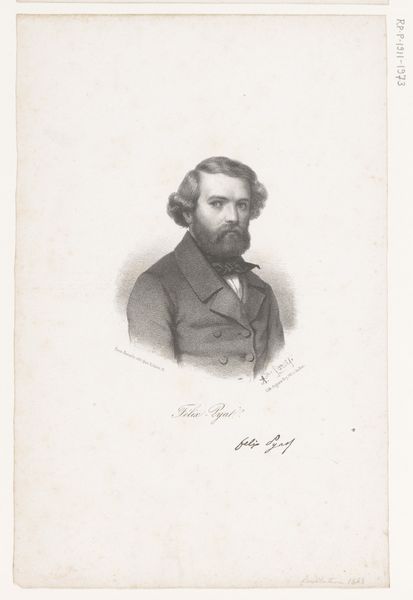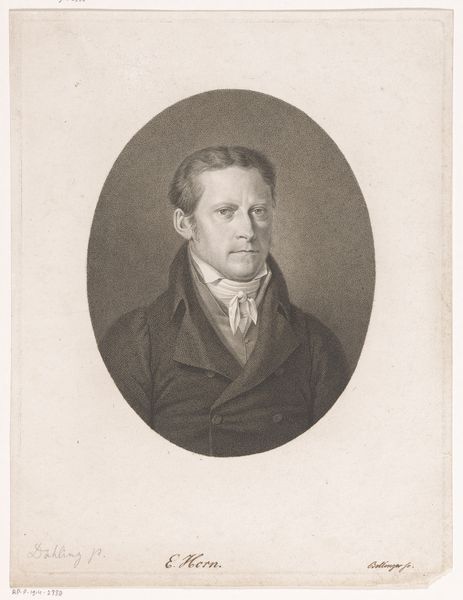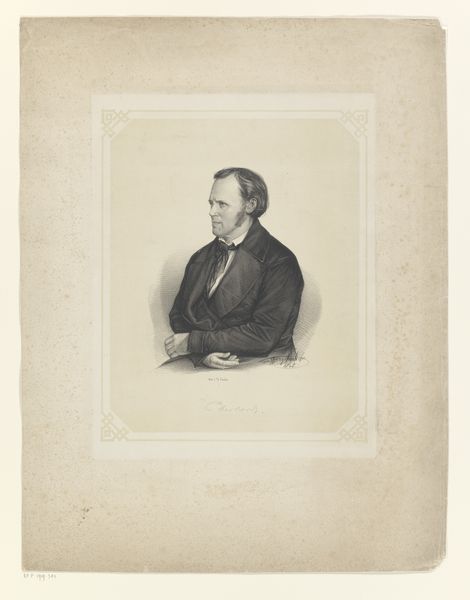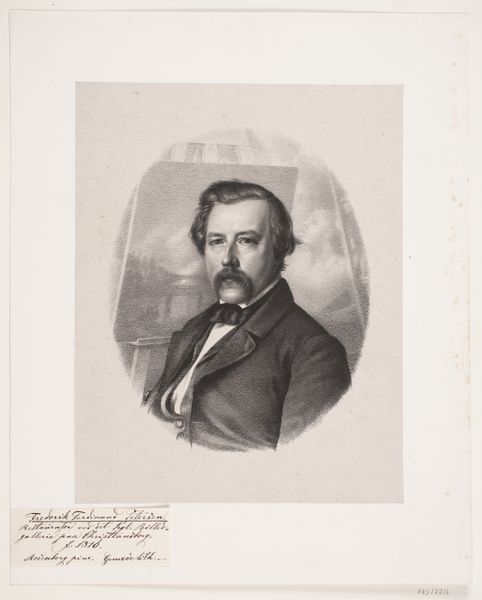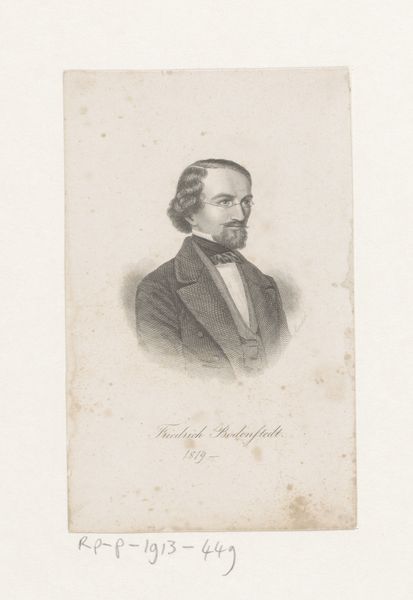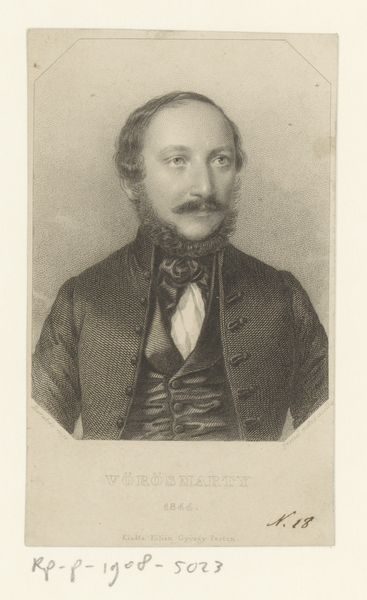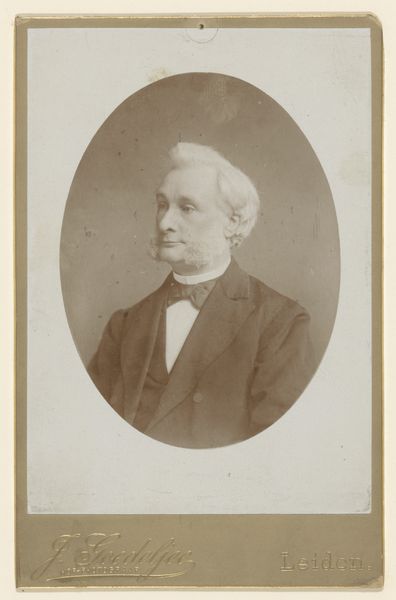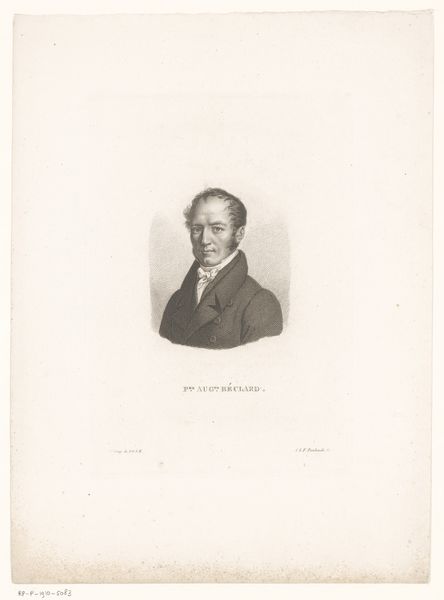
#
portrait
# print
#
historical photography
#
19th century
#
realism
Dimensions: height 291 mm, width 212 mm
Copyright: Rijks Museum: Open Domain
Carl August Deis created this print of Franz Ludwig Feodor Löwe using lithography, a process that democratized image production in the 19th century. The portrait embodies the values of the Biedermeier period in the German Confederation, roughly between 1815 and 1848, emphasizing domesticity and the cultivation of personal virtues. The subject is depicted with a quiet dignity. His direct gaze and understated attire suggest a man of intellect and integrity, rather than overt displays of wealth or power. Lithography allowed for the wider circulation of images, playing a role in shaping public opinion and cultural identity. Prints such as this one were increasingly collected and displayed in private homes, reflecting the era’s focus on middle-class values and the importance of the individual within the domestic sphere. Further research into the sitter and the artist, as well as the print's original context, such as exhibition reviews or related publications, can reveal a richer understanding of its place in the cultural landscape of the time.
Comments
No comments
Be the first to comment and join the conversation on the ultimate creative platform.
